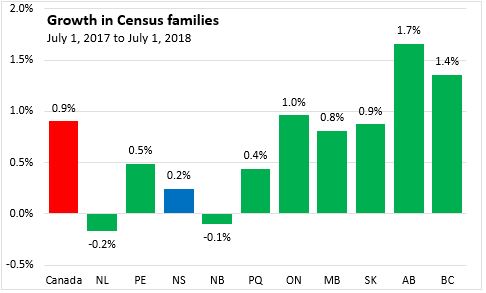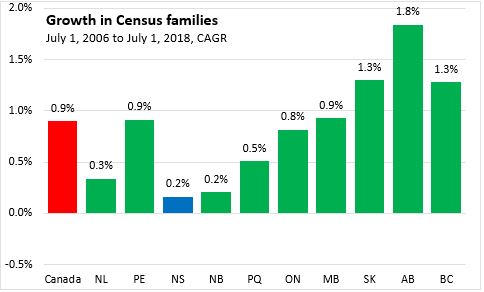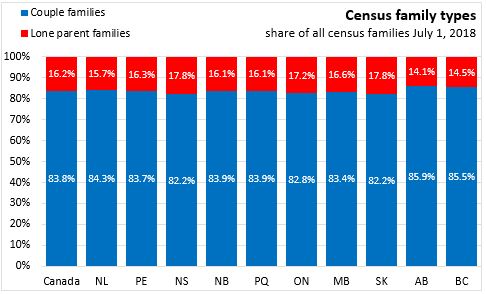The Economics and Statistics Division maintains archives of previous publications for accountability purposes, but makes no updates to keep these documents current with the latest data revisions from Statistics Canada. As a result, information in older documents may not be accurate. Please exercise caution when referring to older documents. For the latest information and historical data, please contact the individual listed to the right.
<--- Return to Archive
For additional information relating to this article, please contact:
June 19, 2019POPULATION OF CENSUS FAMILIES FOR JULY 1, 2018 
The number of census families in Nova Scotia increased by 0.2 per cent from July 1, 2017 to July 1, 2018, reaching 274,810 families. Across Canada, census family growth has followed stable trends. There is faster growth in Ontario and western provinces as well as in Prince Edward Island. Census family growth is slower in Quebec and the rest of Atlantic Canada.

The number of couple families in Nova Scotia increased by 0.3 per cent to 225,973 while the number of lone-parent families was up 0.2 per cent at 48,837. The number of couple families has increased substantially since 2015 while the number of lone parent families has grown at a slower pace.

Lone parent families make up 17.8 per cent of Nova Scotia census families. From 2006-2015, Nova Scotia's proportion of lone parents among all census families was the highest in the country. Since 2016, Saskatchewan has had the highest share of lone parents among census families.

Notes: Statistics Canada defines a census family as a married couple (with or without children of either and/or both spouses), a common-law couple (with or without children of either and/or both partners) or a lone parent of any marital status, with at least one child. A couple may be of opposite sex or same sex. Note that this definition excludes unattached individuals and thus is not equal to the number of households.
As part of Statistics Canada's normal rebasing of population estimates after the Census, there have been updates (2018) and revisions to historical data (2006-2017) to reflect results of the 2016 Census.
Source: Statistics Canada. Table 17-10-0061-01 Estimates of the number of census families as of July 1st
<--- Return to Archive